Top 5 Saransk attractions
Saransk was founded in 1641. Its ancient architecture was well preserved, including the 17th century St. John the Divine Cathedral and the building of the Local History Museum of the Republic of Mordovia built in the 18th century. The Mordovian S. D. Erzia Museum of Visual Arts exhibits paintings by Russian artists. Coins, ancient books, garments and porcelain are stored in the I.D. Voronin Local History Museum. The Culture.ru web portal describes the attractions of Mordovia’s capital.
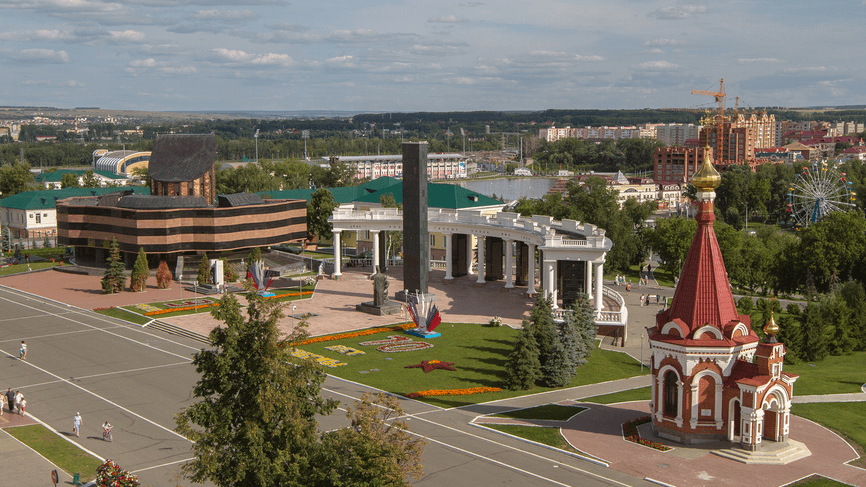
Photo courtesy of Ekaterina Brudnaya-Chelyadinova / Photobank Lori
The Mordovian S. D. Erzia Museum of Visual Arts
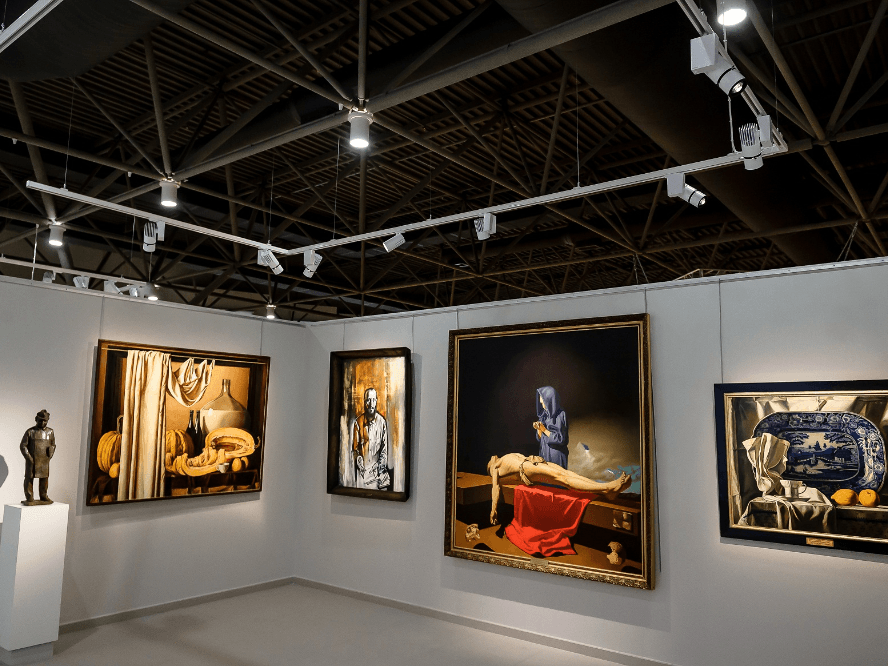
The Mordovian S. D. Erzia Museum of Visual Arts was founded in 1960. It is named after a famous 20th century Mordovia sculptor Stepan Erzia.
The main building’s expositions are dedicated to the works of local artists: Stepan Erzia, Fedot Sychkov, Ivan Makarov. The museum also exhibits paintings by Ivan Shishkin and Ivan Aivazovsky, Valentin Serov and Aleksey Savrasov.
Apart from the main building, the museum complex includes Stepan Erzia house museum in Bayevo village, Fedot Sychkov house museum in Kochelaevo village, an exhibition hall in Saransk and the Mordovian Folk Culture Museum. The latter’s collection contains folk costumes, jewellery, painted ceramics, ancient icons and household items.
The Mordovian United I.D. Voronin Local History Museum

The Mordovian Local History Museum was founded in 1918. In 1935, it moved to the former building of the Three Saints church, a 17th century baroque-style architectural monument.
The museum’s exposition consists of three sections. Its history section stores porcelain and coins, bladed weapons and firearms, traditional clothes of the peoples of Mordovia and ancient books. The most ancient ones are 17th century printed Gospels. The contemporary history section exhibits are dedicated to the period from the February revolution of 1917 up to the present day. In this section, one can find Soviet household items, paintings by Russian artists, military outfits and weapons of the Civil war and the Great Patriotic War. A separate exposition of the Local History Museum is dedicated to the traditional Mordovian wedding. Diagrams in the nature section describe the region’s wildlife.
The Cathedral of St. Theodore Ushakov
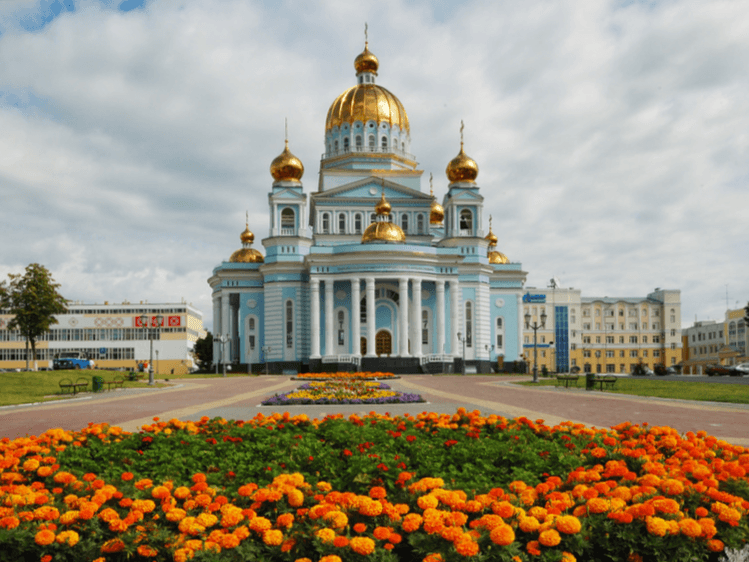
The Cathedral of St. Theodore Ushakov is a cathedral of the Saransk and Mordovian orthodox diocese. The Empire-style building was erected in 2006 and consecrated in the name of the Russian admiral Fyodor Ushakov.
The central Byzantine dome is 62 metres high. There is an observation deck in the cathedral with a view of Saransk from the height of 40 metres. Along the perimeter of the cathedral, there are bell-towers with 12 bells cast in the town of Tutayev in Yaroslavl region using ancient technologies. The iconostasis of the central altar was created by Saransk artisans out of rare types of wood. It is carved and gilded.
There is a christening church with a baptismal font affiliated to the cathedral of St. Theodore Ushakov. Anyone who wishes is free to go for a dip. In the lower gallery, one can enjoy a photo exhibition dedicated to the cathedral’s construction.
St John the Evangelist Cathedral
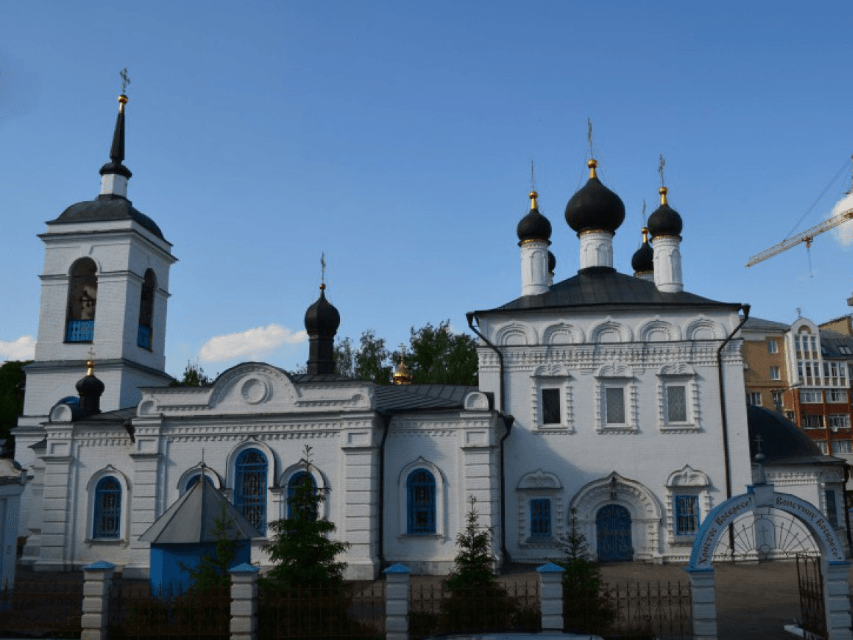
St John the Evangelist Cathedral is the oldest building in Mordovia. It was erected in 1693. In the 18th century, the cathedral was rebuilt and expanded several times, and in the early 19th century, a bell tower was erected near it.
The cathedral’s features correspond to the traditions of Muscovite architecture: the cube-shaped cathedral is crowned with a main dome and four smaller ones. Certain elements of finishing details survived until today: window surrounds, surbases, ‘kokoshnik’ corbels, and a 17th century sculptural brick portal. A classical style bell tower with a spire was erected in 1810s, and a refectory and the Annunciation and St Nicholas side altars were rebuilt in the late 19th century. A baroque iconostasis can be found inside the cathedral.
In 1991, St John the Evangelist church was granted the status of a cathedral.
Memorial Museum of Military and Labour Feat of 1941-1945
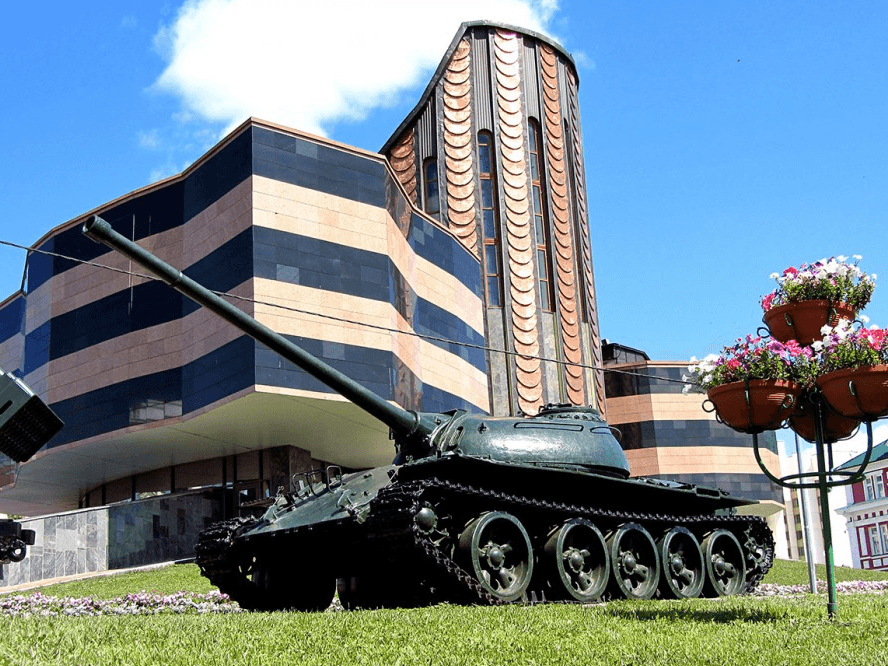
The Memorial Museum of Military and Labour Feat of 1941-1945 is one of the largest cultural centres in Mordovia. It was opened in 1995 to commemorate the 50th anniversary of the Victory over Nazi Germany. The building that today is home to the collection was built specifically for the museum. From a bird’s eye view, it resembles a map of Mordovia. The central turret looks like a Mordovian national headdress, ‘kokoshnik’.
The Museum of Military and Labour Feat is part of the Saransk Victory Square Memorial Complex. Its museum rooms store archives, Mordovian soldiers’ decorations, firearms and bladed weapons, photographs, personal belongings and letters from the front, paintings and sculptures dedicated to the Great Patriotic War. Next to the museum, there is an open-air military vehicles exhibition.
A branch of the Museum of Military and Labour Feat of 1941-1945, the Aleksandr Polezhaev Museum, is also open in Saransk. Its exposition is dedicated to the 19th century poet born in Mordovia. The museum’s exhibits include interior design items, the poet’s relatives’ portraits, drafts of his works, maps and engravings with the views of Saransk.
